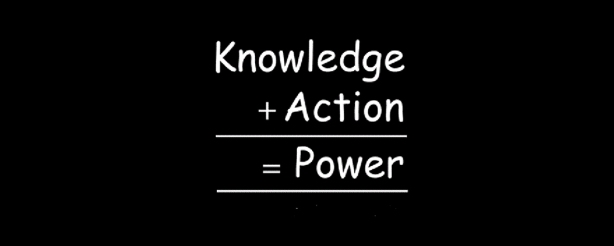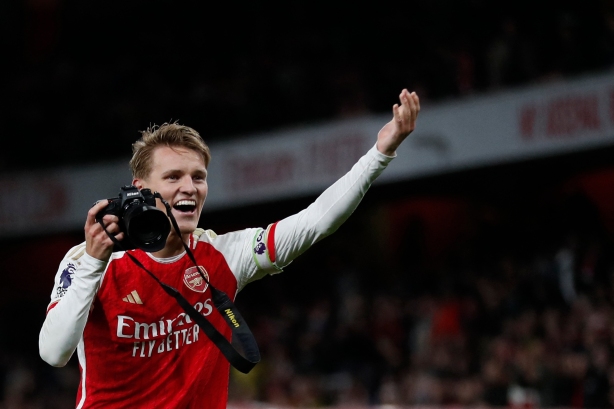Nothing beats a child’s curiosity especially when he or she is trying to understand what adults do what they do. “Why do you have to go to work and not stay home and play with me?” It’s easy to brush this off and say that we need work to make money. Why? So that I can afford to buy things for you and me. Why? So that we do not lack and run out of things. Why? Life can be expensive when you are not prepared with money so it is good to have enough, if not more than enough. When you think you have answered all the questions and no more whines and whys, you hear, “Don’t worry. When I grow up, I will make that money so that you don’t have to work any more and can play some more.” Cute as this is, it is also a wake-up call- how much is enough to stop worrying about what we need once in a while to take in the fresh air and consider why we need it, if not to play more?

Imagine a company that just rambles about what they sell and how they make it, but never really explains why they exist. “Premium quality…made for you and your loved one… you will love it!” This is the kind of thing Simon Sinek, a business author, says most companies do wrong in his book, Start with Why. Sinek’s idea is simple: start with why. What’s the real reason a company exists? What bigger cause would it be fighting for? This “why” is the emotional core that gets people truly invested in a brand. After this, consider the approach towards that why; this is the “how”. And finally, the final output is the “what” which would be the product and services offered by a company. For your everyday employee, the “what” could be the take-home or pay from work. This 3-level analysis is known as the Golden Circle which Simon Sinek has delved deep into whether in talks or his book. On a more personal level, this got me thinking about my why, how and what – if at all they exist 🙂.
So why do I do what I do? The “why” in a company keeps the employees fired up and waking up every morning to work, navigating the traffic jams and crazy motorists at times. On top of this, it is bound to attract customers who believe in what you’re doing. For me, this is like a personal mission statement with some serious passion behind it. Not just passion but my purpose. Why do I write? To challenge my limits and creative boundaries learning from others. The more I read the more I can confidently write. To provoke, to learn, to teach and to pun. A friend of mine once told me to put down my thoughts on paper so that I never lose the train of thought. Hence the tagline for this blog Putting it down on paper… With a strong “why,” those bumps in the road become stepping stones, and you are less likely to forget or lose the drive you have on your projects, business or work. At times, we work so that we can fund or fuel our purpose so that we sustain our causes. Earning and making money is necessary for survival but is not our sole purpose on Earth. Good health and comfortable living is not a purpose on its own. My challenge to myself is this: my “why” should be enduring and in one way or another involve a sort of social impact for it to have a sense of purpose. What is “purpose” if not for the good of the people?
“Singleness of purpose is one of the chief essentials for success in life, no matter what may be one’s aim.”
John D. Rockefeller
How you go about this would be your approach. For a business or project, this involves having a framework that sets up the processes and basic foundation. The path towards making your enterprise stand out from the rest. It may be the customer service. It may be the communication. It may be the follow-up calls after service. All of these depend on the vision and mission of what you are working on. If I have a vision towards mental, physical and spiritual wellness then I check into what I have in place to help me. Is my diet in check? Am I working out? Do I guard my spiritual walk closely through attending church, prayer and fellowship? Am I setting aside time to read and watch content that enlightens, teaches and nourishes? Most organisations have a pretty good understanding of how they do what they do. It’s what distinguishes them from the crowd. So, even at a personal level, it is worth thinking about how you would like to do what you do — the how is often rooted in values.
Lastly, we have to consider the what. End of the day, the “what” is the product or service that a company wants to provide to the customer base. For a person, the “what” could be the job title or the role in the business. Although, this can be confused with your identity at times. Remember, how you were asked to describe yourself and said “I am an accountant”? Well, this is more of what you do, hopefully, based on a vision (why) and values (how) that help you navigate your professional space. In essence, your “what” would be the vehicle through which you express your “why” and “how”. For a singer, these are songs. For an artist, this is the art. For a doctor, this would be the consults and operations performed. We all have something to offer of which we just need to open our minds and hearts to them. But it all starts from the inside looking out.

On the Golden Circle, I can’t say that I am an expert or pro at it. I mean I still wake up every weekday to work to pay the bills and look for other ways to make more money (I probably should start charging a subscription fee for all these nuggets I share 😁). But the more I recall life’s experiences the more I relate different phases as leading to my why, how and what. They have gone through evolution, changes, deletion and pivots. Knowing your “why,” your true motivation, allows you to stay focused and resilient. After understanding your “why,” next up is identifying your “how”- your unique way you achieve results which will be the “what”.
Ultimately, the way I look at it, life is all about knowing why I do what I do rather than focusing on what I do. That said, what’s your “why”?
“It’s not enough to have lived. We should be determined to live for something.”
Winston S. Churchill







